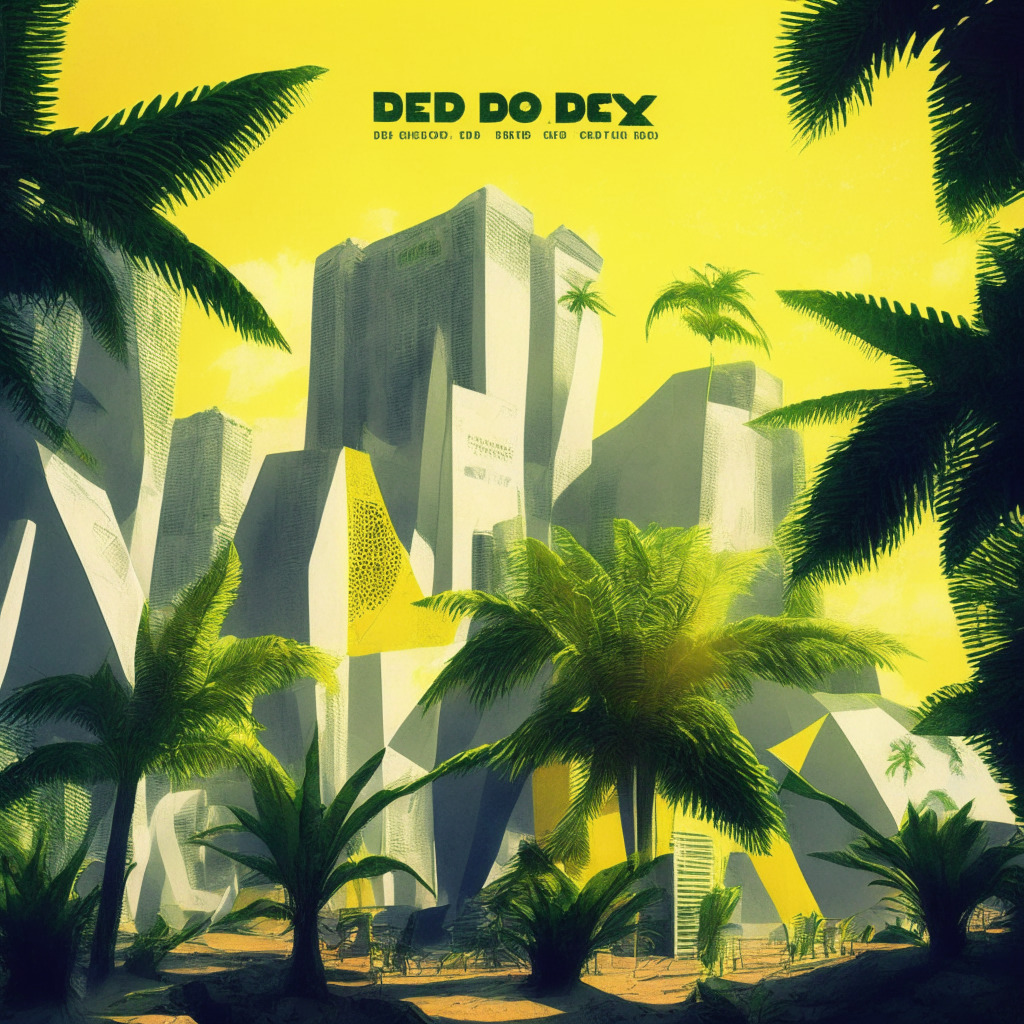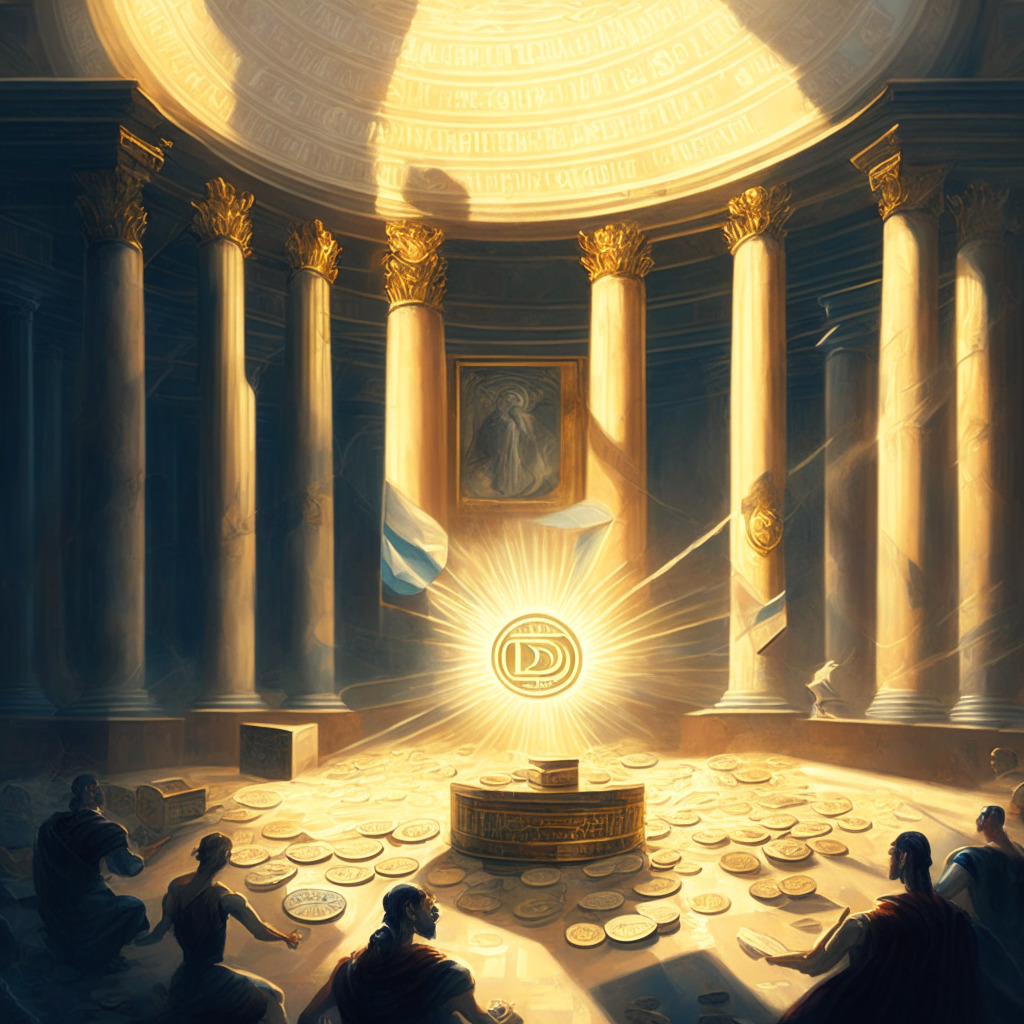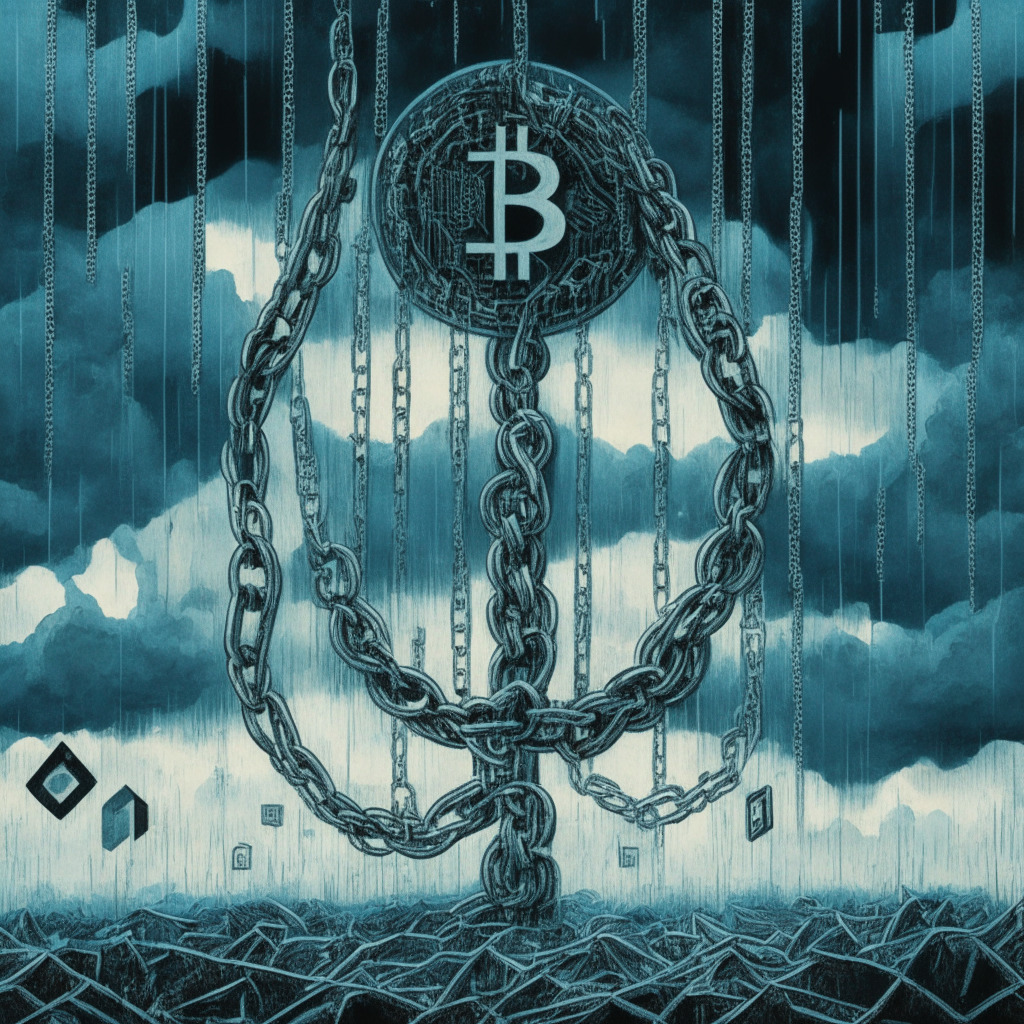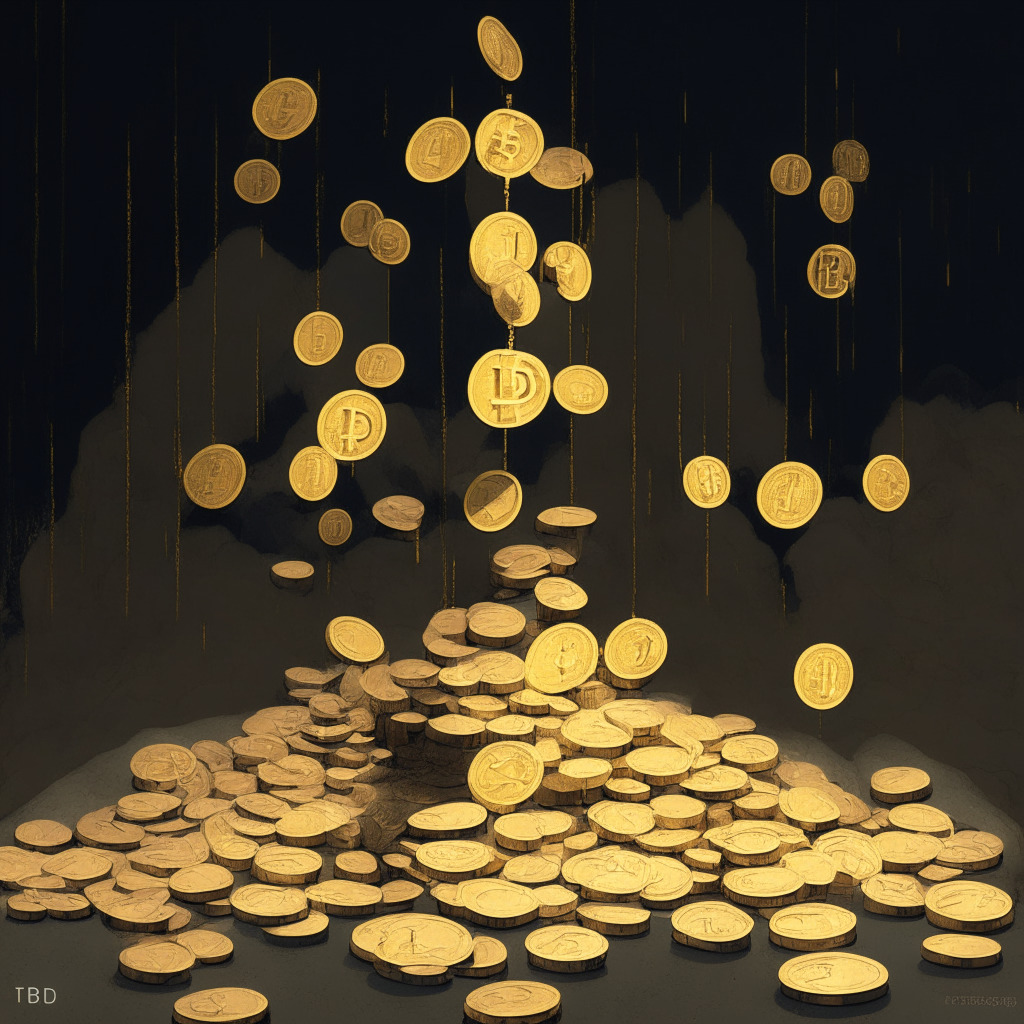“Judge Torres’s ruling in the ongoing Ripple case might bring regulatory clarity to the crypto community. Meanwhile, Coinbase suspended certain stablecoins in Canada, raising questions on whether this regulatory rigour might affect the growth of blockchain’s future or secure the crypto future.”
Search Results for: USDC
PayPal Enters Stablecoin Market: Catalyst for Regulatory Clarity or a Step Away from Decentralization?
“PayPal’s stablecoin, PYUSD, built on the Ethereum network, signals a major step towards crypto adoption in traditional finance. Despite concerns about its centralized structure, PYUSD could clarify crypto regulations, accelerate token usage, consolidate crypto payment with traditional finance, and encourage wider adoption of blockchain technology.”
Untangling WhiteBIT’s Extravagant Promises: The Involved Risks and Rewards in Crypto Lending Platforms
The WhiteBIT platform, connected with crypto figure Justin Sun, promises an alarming 24.8% APY for Tether deposits, tripling the average USD rate. Made noteworthy due to Sun’s history of promoting risky stablecoins, WhiteBIT’s extremely high returns warrant intensive scrutiny from informed investors.
Navigating the Stablecoin Storm: The Push for Regulation Amid Market Instability
Circle’s Chief Strategy Officer, Dante Disparte, emphasizes the need for federal regulation of stablecoins amid market volatility and banking mishaps. Amidst concerns of “counterfeit US dollars using cryptographic methods”, Disparte sees regulation as a safeguard for investors and a protection of monetary policy.
HBAR Rises as FedNow Integrates Hedera’s Dropp: A Seismic Shift in Blockchain Landscape?
“Hedera Hashgraph’s digital token HBAR sees a value surge following its decentralized applications (dApps) Dropp’s listing by the US Federal Reserve’s payment service, FedNow. Dropp offers an affordable micropayments platform and infrastructure for the trending non-fungible token market, positioning Hedera’s applications on the brink of a significant shift in the blockchain technology landscape.”
Hedera Hashgraph HBAR: A Micropayment Powerhouse Attracting Market Attention or a Fleeting Trend?
“Hedera Hashgraph’s HBAR token sees over 15% surge following the inclusion of Dropp, a Hedera-based micropayments platform, on the FedNow. HBAR’s unique use of hashgraph consensus permits over 10k transactions every second. Its growth also aligns with a 288% jump in daily active accounts and a notable spike driven by non-fungible tokens (NFTs).”
Navigating Uncharted Waters: PayPal’s Foray into Stablecoin with PYUSD
“PayPal is venturing into cryptocurrencies with its own stablecoin, PayPal USD (PYUSD), which aims to reduce volatility. Despite competing with established stablecoins in a volatile market, PYUSD’s compatibility with future Web3 applications and PayPal’s reputation could grant legitimacy to the crypto industry.”
Shifting Fortunes as Hedera Outshines Bitcoin and Ethereum Amid Legal and Corporate Drama
“Hedera Hashgraph’s HBAR token saw a 15% surge following its integration into the U.S. Federal Reserve’s instant payment solution, FedNow. Meanwhile, Bitcoin and Ethereum remained stable, highlighting how different tokens react uniquely to market factors. Also, Bank of America believes PayPal’s new stablecoin, PYUSD, may struggle to gain adoption due to competition and changing market conditions.”
Pepe Coin’s Unstoppable Rise: A Whiff of Speculation or Validated Confidence?
“Pepe Coin, a frog-themed cryptocurrency, has seen noteworthy growth, escalating from $0.000001185 to $0.000001356. While this upswing may be influenced by ‘whales’, influential investors suggest confidence in this coin, despite its speculative nature. Projections for 2023 osculate between $0.00000450 and $0.00000080.”
Navigating Blockchain: Innovations, Challenges, and the Intriguing Future of Cryptocurrency
“A telling report by Glassnode indicates that long-term crypto holders are showing tenacity, with Coinbase and Binance creating waves in the sector. Coinbase launched its Ethereum layer-2 blockchain, whereas Binance became the first fully licensed crypto exchange in El Salvador.”
PayPal’s PYUSD vs Major Stablecoins: A Battle for Market Share or a Losing Game?
“Bank of America suggests PayPal’s stablecoin, PYUSD, may struggle in the face of established competitors like USD Tether (USDT) and USD Coin (USDC). Factors such as lack of fresh functionality and wallet compatibility issues could impede its progress. However, PYUSD has potential to enhance customer experience within the PayPal ecosystem and capitalize on blockchain-enabled asset transfers, payments, and remittance services.”
Binance Preparing to List SEI Network’s Native Token: A Glimpse into Pre-Listing Futures Market
“Binance is preparing to list SEI Network’s native token, SEI, on Aug. 15. Implementing pre-listing futures alongside this, according to Aevo’s CEO, will enhance price discovery. SEI’s early valuation is set at 26 cents per token, leading to a market cap close to $486 million, pushing it into the top 100 cryptocurrencies.”
Surge in Blockchain-Based T-Bill Offerings: A Financial Boom or Hidden Risk?
Maple Finance, a blockchain-based credit marketplace received a green light to open its cash management pools for U.S. investors. This opens opportunities for investors to park their stablecoin holdings in one-month U.S. Treasury bills, earning a 4-5% annual yield. While the crypto ecosystem appreciates the opportunities, concerns loom over potential risks.
PayPal’s Venture into Crypto: Exploring Revenue Opportunities and Regulatory Challenges with PYUSD
PayPal is launching its own stablecoin, the PYUSD, targeted to become a new revenue channel for the company. Yielding interest from US dollar deposits and transaction fees, the coin aims to venture into the realms of remittances and gaming. However, potential regulatory scrutiny could impact its trajectory.
Disrupting Traditional Payment Systems: Circle Internet Financial Introduces Programmable Web3 Wallet
Circle Internet Financial, the issuer of USDC stablecoin, unveiled a new programmable web3 wallet platform that enables businesses to offer digital asset payment options. This platform allows consumers to receive, send and store cryptocurrencies and NFTs. Currently available on the Avalanche, Ethereum, and Polygon networks, planned expansions to additional blockchains are underway.
Binance’s Crypto Conversion Controversy: An Analytical Dive into Their Recent Proof-of-Reserves Report
Binance’s proof-of-reserves report reveals a major drop in its USDC reserves from $3.4 billion to $23.9 million within a month. The plunge was intensified due to the strategic shift of its USDC to Binance USD (BUSD), and the acquisition of prominent cryptocurrencies like BTC and ETH. Despite conjecture, Binance maintains a healthy financial state.
Cybersecurity Challenges in Crypto: The Cypher Protocol Breach and its Implications on Other Players
“Cypher Protocol, a Solana-based decentralized exchange, paused operations due to a security breach, with estimated losses of $1 million. Details remain scarce but blockchain explorers suggest funds have begun moving, possibly indicating liquidation attempts. This increases the recent losses suffered by the crypto-community, emphasizing the need for improved security measures in the growing blockchain space.”
Brazil’s CBDC ‘Drex’: Triumph in Banking or Gateway to Central Authority Meddling?
“Brazil’s Central Bank recently introduced its central bank digital currency, Drex. However, concerns are raised by the currency’s potential for central authority interference, alongside questions about the movement of assets of popular cryptos following the collapse of Silvergate Bank. Advocates, meanwhile, hail the currency’s potential to improve Brazil’s banking sector.”
Binance’s Financial Conduct Amidst Unstable Conditions: A Closer Look into Crypto Exchange Transparency
“Binance’s USDC reserves dipped from $3.4 billion to a mere $23.9 million post Silvergate collapse, revealing a major conversion of reserves to BTC and ETH. In the wake of such drastic shifts, questions rise about transparency and safeguards for customer wealth in major crypto exchanges.”
Massive Security Breach: Lessons from the One-Million-Dollar Crypto Heist at Cypher Protocol
“Cypher Protocol, a decentralized futures exchange, experienced a one million-dollar security breach, highlighting vulnerabilities in even well-designed blockchain systems. Such incidents underline the need for continuous innovation in defense mechanisms and proactive asset recovery measures in the blockchain space. They also stress the complexity of tracking blockchain crimes without compromising privacy.”
PayPal’s Stablecoin Revolution: Evolving Crypto Landscape with Regulatory Safeguards
PayPal launches its own stablecoin, PYUSD, representing a pioneering move in bringing regulatory oversight and customer asset protection to the crypto world. The coin, developed with Paxos, is closely monitored by the New York Department of Financial Services to secure it against bankruptcy risks.
Mantle’s $4.2 Billion Treasury: Why the New Economics Committee Can be Both a Blessing and a Curse
“Mantle community is establishing an economics committee to manage its $4.2 billion treasury, largely consisting of its governance token MNT and stablecoins USDC and USDT. The formation expresses a desire for accountability and democracy in decision making, but raises questions about the solidity of Mantle’s financial base due to crypto volatility.”
Paypal’s Foray into Stablecoin: Rising Competition and Shifting Dynamics in Crypto Payments
“Paypal has unveiled plans to issue a new stablecoin, PayPal USD (PYUSD), backed by United States dollar deposits and similar cash equivalents. This marks Paypal’s increasing efforts to become a key player in the crypto payment sector. The launch will heighten competition in the already packed stablecoin sphere.”
Binance’s Surprising Shift to Lesser-Known Stablecoins: Market Intrigue or Strategy Unfolded?
Coinbase CEO, Brian Armstrong, revealed that Binance traded a chunk of its USDC for another stablecoin. This reflects Binance’s increasing interest in newer stablecoins, despite market risks. With its turn towards the lesser-known FDUSD, Binance’s unusual decision indicates a notable trend within the crypto markets.
Huobi Exchange: Amid Rumours and Shrinking Balances, Where Does the Future Lie?
Rumors about Huobi, a cryptocurrency exchange platform, facing internal turmoil have led to a significant 33% drop in its stablecoin exchange balances, equating to a withdrawal of roughly $49 million. Despite denying these allegations, Huobi’s balances have decreased notably since the start of 2021, adding questionable to the overall health of the exchange.
Huobi’s Regulatory Challenges: A deeper dive into the dynamics of control and decentralization
“Cryptocurrency exchanges like Huobi face challenges due to tightening regulatory control. While regulations could enhance market structure and investor protection, they might also stifle innovation. Amid scrutiny, Huobi maintains user trust, emphasizing the need for balancing legislative compliance and innovation freedom.”
US District Court Rules in Favor of Tether: A Closer Look at Stablecoin Regulatory Overhaul
The U.S. District Court dismissed a lawsuit against Tether and Bitfinex, rejecting allegations of false assurances about Tether’s stablecoin, USDT, being fully backed by the US dollar. Despite controversies, Tether remains a dominant player in the stablecoin market, owning a 66.7% market share.
Coinbase’s Strategic Shift: Recurring Revenues Over Transaction Fees and the Untapped Potential Futures
Despite net losses, Coinbase’s Q2 earnings indicate a shift towards recurring revenues and services. The cryptocurrency exchange intends to diversify its income generation, moving away from relying solely on transaction fees. However, investors seem to undervalue this strategic evolution. Future opportunities could significantly redefine Coinbase’s financial playbook.
Exploring Tether’s Financial Dance: A Dip Below 1:1 Peg Puzzles Market Analysts
The USD-pegged stablecoin, Tether (USDT), recently dropped slightly under its 1:1 peg against the US dollar on the DEX Curve Finance, upsetting the primary stablecoin liquidity pool balance. Despite concerns, Tether continues to boost transparency by publishing the value of its reserves daily, helping maintain confidence in its stablecoin’s backing by USD or liquid-equivalent reserves.
The Unexpected Rise of Coinbase: Resilience Amidst Stormy Crypto Waters
Coinbase, the digital exchange platform, reported revenue figures of $708 million, exceeding the $628 million expectation. Despite a drop in transaction revenue and total trading volume, Coinbase’s shares have surged about 160% year-to-date. CEO Brian Armstrong attributes this success to operational efficiency and strategic cost cutting.
Unpacking the Unusual Dynamics: USDT’s Massive Sell-Off Raises Questions and Uncertainties
“USDT, a widely used stablecoin, saw a significant discharge from crypto traders’ wallets, especially on Curve Finance and UniSwap exchanges. This event caused USDT’s price to drop below its usual $1 peg. This indicates that under certain circumstances, investors may prefer holding DAI or USDC rather than USDT.”
Decoding the Crypto Future: Navigating Block Reward Halving and DeFi’s Evolution
The Bitcoin block reward halving presents potential volatility for miners but also shows signs of a promising future for crypto, with an anticipated $10 trillion market cap. Optimism comes from improvements in infrastructure, streamlined mining equipment acquisition, and burgeoning institutional interest. Despite recent DeFi setbacks, such as the Curve Finance hack, there’s hope from ongoing resilience and innovative strategies designed to strengthen the sector.































